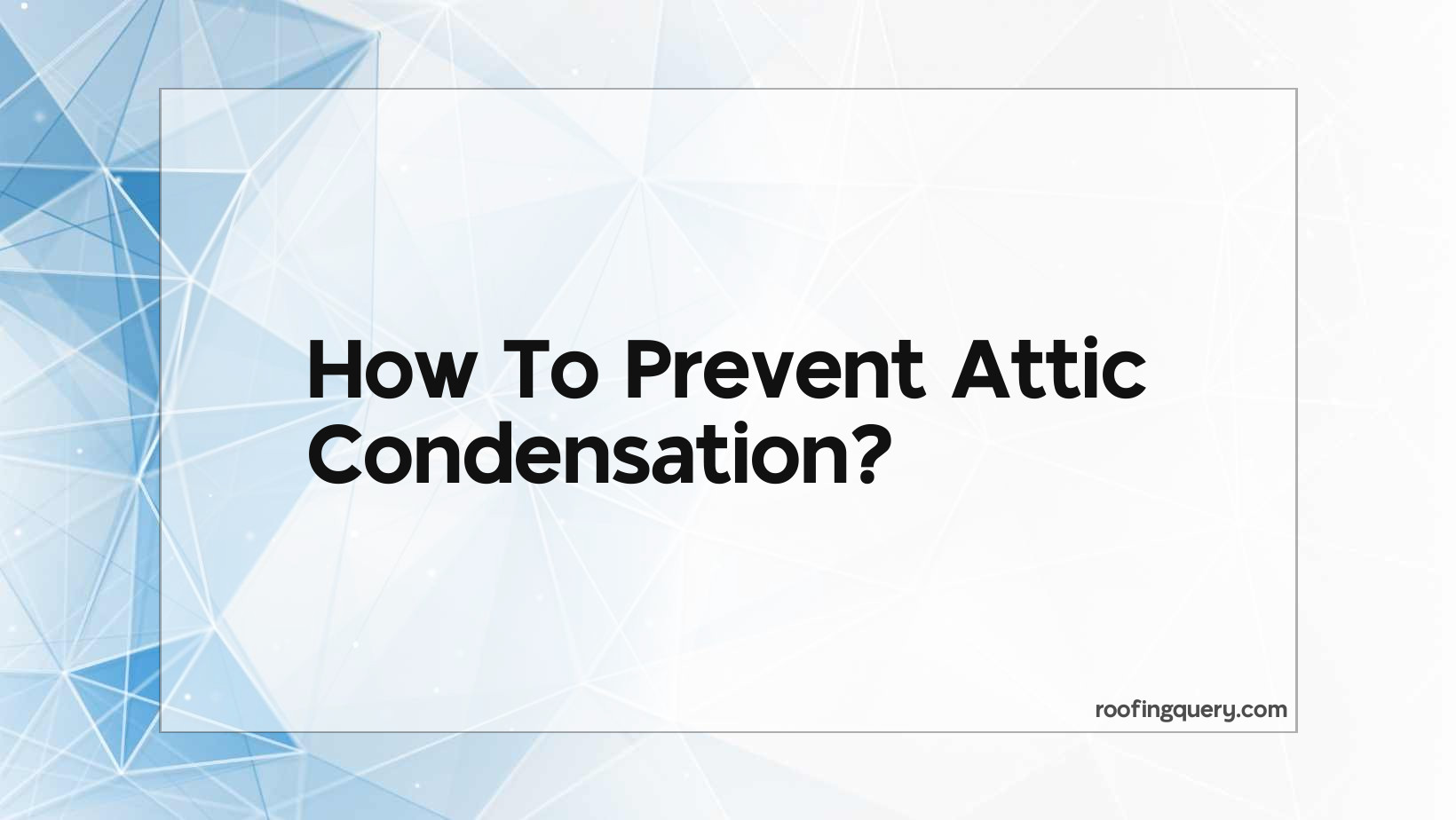Attic condensation can be a real problem in cold weather. It can cause water damage to your home and create a breeding ground for mold and mildew. There are a few things you can do to prevent condensation in your attic.
First, make sure your attic is properly insulated. This will help to keep the temperature in your attic consistent and prevent condensation from forming on cold surfaces.
Second, keep the air in your attic circulating. This can be done by opening a window or door to the attic for a few minutes each day.
Lastly, if you have a vapor barrier in your attic, make sure it is intact and doing its job. A vapor barrier helps to prevent moisture from entering your attic and causing condensation.
If you follow these tips, you should be able to prevent condensation in your attic and keep your home dry and mold-free.
What Is Attic Condensation?

In the hot summer months, the air in your attic can reach sweltering temperatures. If this hot air comes into contact with a cold surface, such as your air conditioning ducts, it can condense and form water droplets. This process is called attic condensation.
While a little bit of condensation is normal, too much can lead to problems. Excess condensation can cause your ducts to rust, your insulation to get wet, and mold to grow.
There are a few things you can do to prevent attic condensation. First, make sure your attic is well ventilated. This will help to keep the air moving and prevent it from getting too hot. You can also insulate your ductwork to help keep the air inside from getting too cold.
If you already have a problem with attic condensation, there are a few things you can do to fix it. First, try to ventilate your attic more. You can also try to insulate your ductwork better. If those things don’t work, you may need to replace your insulation or get a dehumidifier for your attic.
Attic condensation can be a problem, but it’s usually not too difficult to fix. By taking a few preventative measures and knowing what to do if you have a problem, you can keep your attic in good shape all summer long.
How Does Attic Condensation Form?
When warm air from your home rises and comes into contact with the cooler surface of your roof sheathing or attic floor, water droplets can form and accumulate. This is what’s known as attic condensation, and it can be a serious problem in homes with poor attic ventilation.
One way to prevent attic condensation is to make sure your attic is properly ventilated. This will allow the warm air to rise and escape before it has a chance to come into contact with the cooler surfaces in your attic. You can vent your attic by installing a ridge vent or soffit vents.
Another way to prevent attic condensation is to insulate your attic floor. This will help to keep the warm air from your home from rising into the attic in the first place. You can insulate your attic floor by installing a layer of rigid foam insulation between the joists.
If you already have attic condensation, you’ll need to take steps to remove the water and prevent it from coming back. Start by removing any standing water from the attic floor. Then, increase the ventilation in your attic and make sure the attic floor is properly insulated.
What Are The Consequences Of Attic Condensation?
Most people are unaware of the consequences of attic condensation and the potential damage it can cause. Attic condensation is caused by warm, moist air from the living space below rising into the attic and coming into contact with the cooler, drier air in the attic. This can happen in any season, but is most common in the winter when the temperature difference between the two spaces is the greatest.
When the warm, moist air hits the cooler surfaces in the attic, it condenses and forms water droplets. This can happen on the underside of the roof deck, on rafters, on ductwork, or on any other surface that is cooler than the air around it. Over time, this condensation can lead to serious problems, including:
– Rotting of wood framing members
– Rusting of metal framing members
– Growth of mold and mildew
– Deterioration of insulation
– Damage to electrical wiring
In extreme cases, attic condensation can even cause the collapse of the roof.
The best way to prevent attic condensation is to keep the attic space as cool and dry as possible. This can be done by ensuring that there is adequate ventilation in the attic and by sealing any openings that allow warm, moist air to enter the space. In some cases, it may also be necessary to install a dehumidifier in the attic to help control the level of humidity.
How Can I Prevent Attic Condensation?
When temperatures start to drop in autumn and winter, your attic can become a breeding ground for condensation. This is because warm air from your living space rises and escapes through gaps in the attic, while cold air from outside seeps in. As these two air masses meet, the moisture in the air condenses and creates water droplets on surfaces like your attic floor and rafters.
If left unchecked, this condensation can lead to serious problems like mould and rot. It can also make your attic a less comfortable place to be, as the dampness can seep down into your living space.
So
What can you do to prevent attic condensation?
Here are a few tips:
1. Make sure your attic is well-ventilated. This will help to circulate the air and stop the temperature difference between the inside and outside from becoming too great. You can install vents in the eaves or fit a wind turbine vent on the roof.
2. Insulate your attic. This will help to keep the warm air from your living space from escaping.
3. Keep the attic door closed. This will stop cold air from outside from coming in and will also help to keep the warm air from your living space from escaping.
4. If you have a fireplace, use it regularly. The heat from the fire will help to reduce the humidity in the air and will also help to keep the attic warm.
5. Reduce the amount of moisture being produced in your home. This can be done by using a dehumidifier or by ensuring that any damp areas in your home (such as the kitchen or bathroom) are well-ventilated.
By following these tips, you can help to prevent attic condensation and the problems that come with it.
If you’re still unclear about how to prevent attic condensation, feel free to leave a comment below.

